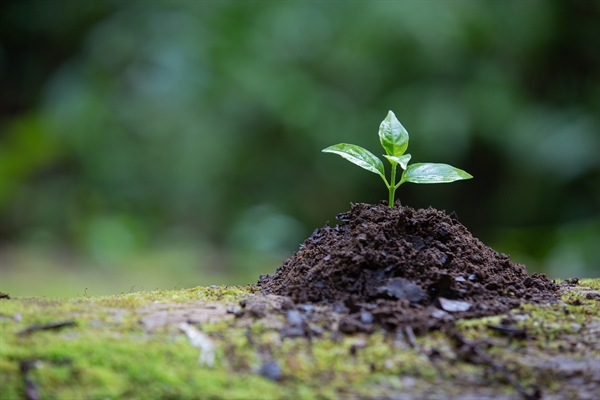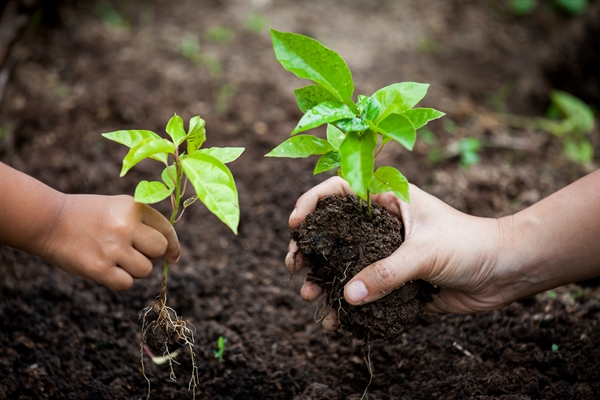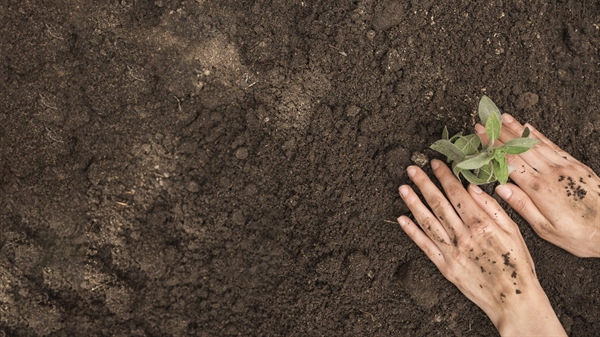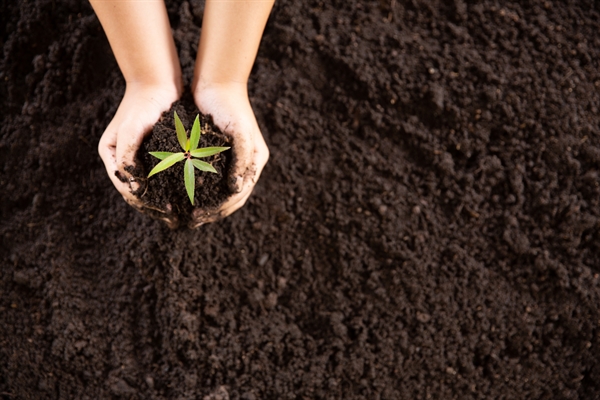Making compost with lawn clippings appears like a logical thing to do, and it is, however you do need to be familiar with some features of composting lawn turf prior to you go on and do it. Understanding more about composting with grass clippings implies that your overall compost pile will be better off.
Gathering cut lawn to garden compost can be a huge chore and if you mow your yard effectively, it is an unneeded chore. Cutting your yard at the appropriate height and with the appropriate frequency implies that the clippings will disintegrate naturally on your lawn without presenting any harm. In truth, allowing grass clippings to decompose on your yard naturally will help to add nutrients to the soil and reduce your lawn’s requirement for fertilizer.

Most notably, you need to be aware that freshly cut grass is thought about a ‘green’ material in your garden compost stack. A compost stack requires to have a proper balance of green and brown material in order to decompose correctly, so when you are composting with grass clippings that are newly cut, you require to ensure that you likewise include browns, such as dry leaves.
Lots of people also have concerns about composting yard that has been treated with herbicide and how that will affect their compost. If you are composting domestic yard clippings, then the herbicide that can lawfully be used on your lawn is needed to be able to break down within a matter of a few days and should not pose any more risk to other plants that get garden compost made from these lawn clippings.
One might think that turf clipping composting is as easy as simply tossing the turf into the compost heap and after that leaving. This is not real, particularly if you are speaking about fresh lawn clippings. Due to the fact that turf is a green product and tends to form a mat after being cut and piled, just tossing grass clippings into your compost stack can lead to a slow and/or stinky compost pile.
To put it simply, incorrectly dealt with yard clippings in the compost load can result in a putrid, mucky mess. Instead, when making garden compost with grass clippings, make certain that you blend or turn the yard clippings into the pile. This will help distribute the green material equally through the stack and will prevent the grass from forming a mat in the stack.
Now that you know how to compost yard, you can take benefit of this plentiful resource and help keep garbage dumps simply a little less filled.


If you have actually got a lawn, it requires to be mowed. Simple as that. But did you know you can put your grass clippings to work? If you use them right, they can save you time and cash while likewise creating a much healthier yard. Plus, it’s extremely simple to do! So, if you’ve been wondering what to do with grass clippings after cutting, question no more! You wish to compost them.
Composting grass clippings is the very best! You basically do absolutely nothing. Truthfully, it’s as basic as leaving the clippings on your yard after mowing instead of linking a bag. And doing this keeps your lawn much healthier. Just take a look at these statistics! Fertilize less. When grass clippings decay, the yard takes in all those nutrients, like nitrogen, phosphorous and potassium.
In Cedar Rapids, IA, Guadalupe Mccarty and Terrance Weber Learned About Bag Grass Or Not
But do not avoid fall! That’s the most crucial time to fertilize. Conserve water. Recycling grass clippings indirectly enhances soil structure, which implies it can hold up to 12 percent more water, according to the University of Minnesota. Invest less time. You’ll conserve approximately 35 minutes each time you trim.
Good! Decrease waste. Did you understand backyard trimmings make up nearly 20 percent of our solid waste? You’ll feel great recycling and reusing instead of trashing your grass. Plus, if you’ve heard that leaving grass clippings causes thatch, recent research studies have actually shown that’s typically not real. So, recycle your turf with confidence.
Cut turf to its perfect height, which is 3 inches for cool-season lawns and 2 inches for warm season lawns. If you experience a conventional cold winter, you most likely have cool season turf! Throughout peak season, trim every five days, rather of every seven. Although you’ll do this more, you’ll invest as much as 38 percent less time throughout each mow, according to the University of Idaho.
That’s it! However if you see the clippings collecting in piles, rake ’em out, so they can disintegrate quicker. To compost lawn clippings traditionally in a pile or bin: Attach a lawn mower bag to capture lawn clippings. Include dry lawn that hasn’t been dealt with in the last 14 days to your compost heap.
If you enable grass to decompose on your lawn, it’ll be gone soon, typically within a few weeks. If you compost turf in a stack and turn regularly, it’ll develop into garden compost in a few months. To compost lawn in the yard quicker, trim every five days! If you’re composting lawn in a stack, get the ratio right, turn your stack weekly and water when dry.
Teacher Rot says: What can I state? Lawn clippings are invaluable to composting. But you need to discover how to do it correctly so both your lawn and compost bin more than happy! During the spring and summer season yard clippings can inhabit approximately half of one’s overall backyard trimmings.
The appealing word that describes the whole brand-new motion to educate property owners about composting and recycling their turf clippings is Grasscycling. So, let’s start there. GRASSCYCLING Forget those long-held beliefs that lawn clippings left on a yard smother the lawn below or cause thatch. Grass clippings are actually great for the yard.

Grasscycling is an easy, easy opportunity for every house owner to do something helpful for the environment. Grasscycling is an accountable environmental practice and a chance for all homeowners to decrease their waste. And the very best part is, it takes less time and energy than bagging and dragging that yard to the curb.
Yard clippings are over 80% water, so they break down quickly and launch nitrogen and other nutrients back into the lawn and soil naturally, thereby improving yard quality. Turf clippings add water-saving mulch and encourage natural soil aeration by earthworms. Advantages to Grasscycling No bagging or raking the yard (Whew!) Plastic yard bags do not wind up in the land fill 50% of your yard’s fertilizer needs are fulfilled, so you reduce money and time invested fertilizing Less polluting: lowers the requirement for fertilizer, pesticides and herbicides Non-thatch causing, therefore making a yard vigorous and durable Makes you feel great and green all over! Yahoozy! Not only does it make caring for your yard simpler, but grasscycling can also lower your mowing time by 50% due to the fact that you do not need to choose up afterwards.
In Staunton, VA, Declan Lester and Isabell Williamson Learned About How To Decompose Compost Faster
To grasscycle properly, cut the grass when it’s dry and constantly keep your lawn mower blades sharp. More pointers to assist take full advantage of the benefits of grasscycling clippings on your yard: Get rid of no greater than 1/3 of the leaf surface location with each mowing. Mow when the lawn is dry. Use a sharp lawn mower blade.
Aerate your yard. In the spring, lease an aerator which gets rid of cores of soil from the yard. This opens the soil and permits higher movement of water, fertilizer, and air by increasing the speed of decay of the grass clippings and enhancing deep root growth. Water thoroughly when required.
Make sure you follow the appropriate lawn care schedule for your kind of turfgrass. Grass Composting Tips Grass clippings, being mainly water and really abundant in nitrogen, are problematic in compost bins due to the fact that they tend to compact, increasing the possibility of becoming soggy and giving off a strong ammonia-like smell. Follow these pointers for composting this valuable “green”, therefore reducing smell and matting, and increasing quick decomposition: Pointer # 1: Compost in thin layers, intermixed in a 2-to-1 ratio with “brown” materials such as dry leaves or plant particles (saving/bagging Fall’s leaves is perfect for Spring/Summer grass composting).
Suggestion # 2: Let turf clippings dry for a number of days before composting. Pointer # 3: If your bin is packed filled with lawn clippings, turn the pile (utilize a compost aerator tool) every few days for very quick outcomes. Especially do this to bring air into matted, smelly piles.
When grass clippings are permitted to decay naturally on the yard, they launch important nutrients, include water-saving mulch and motivate natural soil aeration by earthworms. Grasscycling conserves time and work. A recent study in the United States found that 147 house owners who stopped bagging their clippings conserved approximately 35 minutes per mowing.
Heck, that’s a day at the beach! All yard mowers can grasscycle. No special lawn mower is essential. For finest outcomes, keep the lawn mower blade sharp and cut just when the grass is dry. Yard clippings are a complimentary, high-nitrogen fertilizer. When clippings break down, they release their nutrients back to the yard.
When left on the yard, clippings are rapidly broken down into these nutrients, which are gone back to the lawn. There’s no contaminating run-off, no use of non-renewable resources and no damage to soil organisms or wildlife. Grasscycling means there’s no requirement to invest tax dollars on landfilling grass. The expense of trucking lawn clippings to land fill sites comes out of locals’ taxes.
And tax dollars might be invested in services and programs rather than on the labor, trucks, fuel and valuable garbage dump area utilized in grass disposal. Grasscycling is an easy, simple opportunity for each homeowner to do something great for the environment. Grasscycling is an accountable environmental practice and an opportunity for all house owners to reduce their waste.
The American Love Affair with Lawns Today, 58 million Americans spend approximately $30 billion every year to keep over 23 million acres of yard. That’s an average of over a third of an acre at $517 each. The exact same size plot of land could still have a little yard for entertainment, plus produce all of the veggies needed to feed a household of six.
In 4401, Byron Best and Houston Bird Learned About Leaving Grass Cuttings On Lawn
These very same yards make up about 1/12 the area of all U.S. farmland, or approximately the size of the state of Indiana. Yards utilize 10 times as lots of chemicals per acre as commercial farmland. These pesticides, fertilizers, and herbicides run off into our groundwater and evaporate into our air, triggering extensive contamination and international warming, and considerably increasing our risk of cancer, heart problem, and abnormality.
In truth, yards use more equipment, labor, fuel, and farming toxins than industrial farming, making yards the largest agricultural sector in the United States. However it’s not simply the property lawns that are wasted on lawn. There are around 700,000 athletic premises and 14,500 golf courses in the United States, a lot of which used to be fertile, productive farmland that was lost to developers when the regional markets bottomed out.
To trim properly, a number of issues must be considered: height, frequency, clipping removal, and blade sharpness. The chart below recognizes the most typical ranges of turfgrass grown in backyards, and the height to set your lawn mower. Check out the suggestions listed below for further guidelines. Turfgrass Variety Set Lawn mower tothis Height Trim at or prior to this Height Cool Season Varieties Kentucky Bluegrass 2.5-3.5″ 4″ Fine/Tall Fescue 2.5-3.5″ 4″ Perennial Ryegrass 2.5-3″ 4″ Warm Season Bermudagrass.5-1″ 2″ Zoysia.5-1″ 2″ MOWING HEIGHT: Under a lot of circumstances, yards need to be cut at 2.5-3-inches.


Cutting height is critical. If you cut too brief the root system will be limited and shallow. Your yard will be more vulnerable to summertime dry spell and illness stress. The greater you trim, the much deeper your lawn’s root system will develop. Your lawn will stay greener longer into the summer season and require less water.

If you do, do not wait to raise your mower. Raise it back to 2.5-3-inches in early spring to encourage a deep root system prior to summer. CUTTING FREQUENCY: The majority of people cut as soon as a week, which is fine. Nevertheless, mowing more regularly, specifically in the spring, will enhance your yard appearance.
composting grass
every other week), yard quality will suffer. In basic, do not remove more than 1/3 of the height of the turf each time you cut. For example, if you’re trimming at 2-inches, trim before your yard reaches 3-inches in height. Lawns go through a natural growth rise in the early spring.